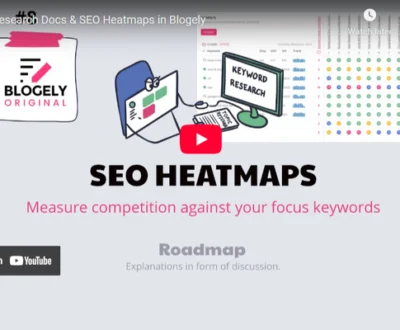I recommend focusing on seasonal keywords that show spikes during specific times, like “Christmas gifts” in winter or “spring cleaning” in spring, to reach audiences when interest is highest. Using tools like Google Trends and Semrush helps identify these timely terms and analyze competitors’ strategies. Incorporating seasonal keywords into your content and planning campaigns months in advance boosts visibility and engagement during peak seasons. Exploring this approach further reveals effective keyword strategies across different seasons.
- Key Takeaways
- What Are Seasonal Keywords and Why They Matter
- Distinguishing Seasonal Keywords From Evergreen Keywords
- Tools to Identify and Analyze Seasonal Keywords
- How to Research Seasonal Keywords Effectively
- Strategies for Incorporating Seasonal Keywords Into Your Content
- Timing Your Content and Campaigns Around Seasonal Trends
- Examples of High-Impact Seasonal Keywords by Season
- Frequently Asked Questions
- Final Thoughts
Key Takeaways
- Use tools like Google Trends, Semrush, and Ahrefs to identify seasonal keywords with peak search interest at specific times of the year.
- Analyze historical search volume data and competitor strategies to uncover high-impact seasonal keywords and content gaps.
- Incorporate seasonal keywords naturally into titles, meta descriptions, headings, and body content for improved SEO relevance.
- Plan and launch seasonal campaigns four to six months in advance, aligning content calendars with key seasonal events.
- Adjust bids and budgets dynamically during peak seasons to maximize visibility and capture targeted seasonal traffic.
What Are Seasonal Keywords and Why They Matter
Seasonal keywords are search terms that experience noticeable spikes in popularity during specific times of the year, such as holidays, weather changes, or annual events.
Understanding the seasonal keyword significance is essential because consumer search patterns shift predictably throughout the year. For example, phrases like “Christmas gifts” surge in December, while “swimwear” becomes popular in summer.
These fluctuations reflect consumers’ changing needs and interests tied to seasons, holidays, or industry cycles. By recognizing these patterns, businesses can align their SEO strategies to match peak interest times, improving visibility and capturing targeted traffic. Seasonal keywords often involve long tail phrases which tend to have lower competition and are easier to rank for during specific seasonal periods.
Seasonal keywords help marketers connect with users who’ve high intent, making their campaigns more effective. Ignoring these trends means missing out on opportunities to reach customers when demand is highest.
In short, grasping how seasonal keywords influence search behavior is a practical step for anyone looking to optimize online presence during critical periods.
Distinguishing Seasonal Keywords From Evergreen Keywords
When planning keyword strategies, it’s important to recognize how search interest can vary over time. Seasonal keywords show spikes in search volume during specific periods like holidays or events, but their keyword longevity is limited.
In contrast, evergreen keywords maintain steady search volume year-round and offer lasting value. To distinguish between the two, consider these points:
- Seasonal keywords have time-dependent relevance, ideal for short-term campaigns and timely content.
- Evergreen keywords provide consistent traffic, supporting long-term SEO and brand authority.
- Analyzing search volume trends over 12 months helps identify keyword longevity and plan content accordingly.
- Monitoring these trends is essential because search volume can change due to trends.
Understanding this distinction allows you to balance your strategy. Use seasonal keywords to capture immediate interest during peak times, and evergreen keywords to build a stable presence.
This approach guarantees your content remains relevant both now and in the future, maximizing reach effectively.
Tools to Identify and Analyze Seasonal Keywords
When identifying seasonal keywords, I rely heavily on tools like Google Trends, which clearly shows how interest changes over time and helps me spot peak periods.
Extensive keyword research suites such as Semrush or Ahrefs provide detailed data, including historical search volumes and competitor analysis, to refine my strategy.
Additionally, I use analytics data from Google Analytics and Search Console to verify seasonal patterns and understand how users engage with my content during specific times.
Google Trends Insights
Although many tools claim to help identify trending keywords, Google Trends stands out by offering a clear visualization of how search interest changes over time. This makes keyword analysis straightforward, helping you spot seasonal patterns with ease.
I use Google Trends to track recurring spikes and valleys in search interest, which reveal when specific keywords gain popularity.
Here’s what I find most useful about Google Trends:
- Visualizes keyword popularity over customizable time ranges, showing clear seasonal cycles.
- Filters data by region, category, and search type to tailor insights geographically and contextually.
- Highlights related queries and topics, uncovering emerging seasonal sub-keywords to target.
Keyword Research Suites
Keyword research suites like Semrush and Ahrefs offer powerful tools to identify and analyze seasonal keywords, making them essential for any content strategy aiming to maximize reach.
These suites provide historical data to track search volume fluctuations and keyword difficulty scores to evaluate SEO optimization potential. They also include competitor analysis and keyword gap features, helping you discover seasonal opportunities your rivals might miss.
Tools like Semrush’s Keyword Magic Tool and Ahrefs’ Keywords Explorer generate relevant seasonal keyword ideas, while trend graphs reveal seasonal search patterns.
Additionally, these suites support content planning by identifying question-based keywords and analyzing SERP features triggered by seasonal terms.
Using keyword research suites helps you create timely, optimized content that aligns with audience interests and improves your search rankings during peak seasons.
Analytics Data Usage
The insights gained from keyword research suites become even more valuable when paired with analytics data from tools like Google Analytics and Google Search Console.
These platforms enable precise analytics tracking and offer powerful data visualization, helping to identify seasonal keyword trends effectively. By analyzing historical traffic patterns, impressions, and click-through rates, I can pinpoint when specific keywords gain traction during certain seasons.
To maximize your reach, consider these key steps:
- Use Google Analytics 4 to monitor organic search traffic and user behavior across seasons.
- Examine Google Search Console’s Performance report for impressions, clicks, and CTR fluctuations over custom date ranges.
- Combine GA and GSC data with Google Trends to visualize keyword popularity and validate seasonal interest peaks.
This approach guarantees targeted content that aligns perfectly with seasonal demand.
How to Research Seasonal Keywords Effectively
To research seasonal keywords effectively, I start by analyzing search trends using tools like Google Trends to spot when interest peaks.
Then, I leverage keyword research tools to find relevant terms and assess their competition and search volume.
I also study competitor strategies during key seasons to uncover valuable keyword opportunities I might’ve missed.
Analyzing Search Trends
Since seasonal search trends fluctuate predictably throughout the year, analyzing these patterns carefully helps you identify the best times to target specific keywords.
By examining historical search volume data, you can spot seasonal spikes that repeat annually. This insight lets you plan content and campaigns to match peak interest periods effectively.
When analyzing search trends, focus on:
- Reviewing multi-year data to distinguish true seasonal spikes from short-lived events
- Using data visualization to identify clear, recurring patterns in keyword popularity
- Comparing related keywords to understand their relative timing and search volume
This approach guarantees you base your strategy on reliable trends, maximizing reach when audience interest is highest.
Understanding these patterns is key to optimizing seasonal keyword targeting.
Leveraging Keyword Tools
After identifying seasonal search trends, using the right keyword tools helps you research and confirm which terms will perform best during specific periods.
Tools like Google Keyword Planner provide historical search volume data and keyword variations, enabling you to spot seasonal opportunities effectively.
SEO suites such as Semrush and Ahrefs offer extensive lists of related seasonal keywords and filter options based on search volume and difficulty.
Google Trends lets you visualize interest over time, highlighting precise seasonal peaks and declines.
Specialized tools like LowFruits uncover long-tail seasonal variations, while internal data from Google Analytics 4 and Search Console reveal which seasonal keywords have driven traffic previously.
Studying Competitor Strategies
Although researching seasonal keywords may seem straightforward, studying competitor strategies offers valuable insights that go beyond basic keyword lists. By analyzing competitor content and seasonal promotions, you can uncover keyword gaps and optimize your approach.
I focus on three key actions:
- Review competitor websites and social media to see how they use seasonal keywords and run promotions.
- Identify untapped keywords competitors rank for, using tools to compare content and search volume.
- Monitor competitors’ seasonal campaigns and PPC ads to spot trends and effective messaging.
This method helps me refine content strategies, adapt marketing messages, and plan ahead.
Understanding competitor strengths and weaknesses in seasonal promotions gives a clearer path to maximizing reach and standing out in the market.
Strategies for Incorporating Seasonal Keywords Into Your Content
When you incorporate seasonal keywords into your content, you improve your chances of attracting timely traffic and engaging users searching for relevant topics.
Effective keyword placement is essential; make certain to include seasonal keywords in your page titles, meta descriptions, headings, and naturally within the body text.
Don’t overlook optimizing image alt text and file names, as these also help search engines understand your seasonal content.
Creating dedicated landing pages or category pages for major seasonal events can organize your content and boost visibility.
Instead of producing new content every year, focus on updating existing pages with fresh seasonal keywords and current information, keeping URLs evergreen.
This approach guarantees your content remains relevant over time.
By blending seasonal keywords with evergreen terms, you maintain traffic beyond peak periods.
Careful keyword placement within your content structure maximizes impact and helps your site rank higher during key seasonal searches.
Timing Your Content and Campaigns Around Seasonal Trends
Incorporating seasonal keywords effectively sets the foundation, but timing your content and campaigns correctly guarantees you reach your audience when they’re most receptive.
Seasonal timing involves planning your campaigns four to six months ahead, allowing time for strategy, creation, and execution. Campaign scheduling should align with peak demand periods and consumer behavior shifts identified through data analysis and tools like Google Trends.
To manage this well, consider these key steps:
- Develop a content calendar to map out key dates, holidays, and relevant events for precise scheduling.
- Launch campaigns just before peak interest to avoid losing relevance or missing the moment entirely.
- Adjust bids and budgets dynamically during peak seasons to maximize reach and impact.
Examples of High-Impact Seasonal Keywords by Season
Since seasonal keywords vary throughout the year, recognizing which terms perform best during each season can greatly enhance your marketing efforts.
For spring keyword strategies, focusing on phrases like “spring cleaning services,” “gardening tools for spring,” and “Mother’s Day gifts” can attract customers preparing for seasonal activities. Allergy relief products also see higher interest during this time.
Moving into summer keyword optimization, terms such as “summer vacation packages,” “beachwear sales,” and “barbecue recipes” tend to perform well. Back-to-school supplies and summer dresses are also popular searches as the season progresses.
In fall, keywords related to “Halloween costumes,” “Thanksgiving recipes,” and “pumpkin spice” dominate, while winter brings demand for “Christmas gifts,” “winter clothing,” and “New Year’s resolutions.”
Understanding these high-impact seasonal keywords allows you to tailor your content and campaigns effectively, ensuring you reach your audience when their interests peak.
Frequently Asked Questions
How Do Seasonal Keywords Impact Voice Search Optimization?
I notice seasonal search patterns shape voice query trends, so I tailor content to match timely interests. This way, I connect better with users’ needs, improving my voice search optimization and boosting relevant traffic during key seasons.
Can Seasonal Keywords Improve Email Marketing Open Rates?
Oh sure, because everyone just *loves* their inbox stuffed with holiday promos! But seriously, I’ve found that crafting email subjects with seasonal keywords can boost open rates by making messages timely, catchy, and impossible to ignore.
What Are Common Mistakes When Targeting Seasonal Keywords?
When targeting seasonal keywords, I avoid keyword stuffing and poor timing relevance. Starting too late or overusing keywords can hurt SEO and confuse readers. Planning ahead guarantees my content stays relevant and ranks well during peak seasons.
How to Balance Seasonal Keywords With Brand Voice Consistency?
Balancing seasonal keywords with brand voice consistency is like walking a tightrope—I focus on seamless keyword integration while ensuring audience alignment, so seasonal terms enhance rather than overshadow my core message, keeping my brand authentic and relatable.
Are Seasonal Keywords Effective for B2B Industries?
I believe seasonal keywords are highly effective for B2B industries because aligning with B2B trends and seasonal strategies boosts visibility and engagement, helping businesses connect with clients during key buying cycles and industry-specific peak periods.
Final Thoughts
It’s ironic that seasonal keywords, which come and go like fashion trends, can actually provide lasting benefits when used wisely. While they may seem fleeting, ignoring them means missing timely opportunities to boost your content’s reach. By understanding their patterns and integrating them strategically, you don’t just follow the season—you make it work for you. So, embracing seasonal keywords isn’t about chasing trends; it’s about smartly timing your efforts to maximize impact.
Windee Tan is a seasoned SEO Specialist with over a decade of experience helping businesses grow their organic visibility through data-driven strategies. He specializes in technical SEO, content optimization, and local search, with deep knowledge of tools like GA4, GSC, SEMrush, and Screaming Frog. Windee is passionate about translating complex SEO insights into practical tactics that drive real-world results. When he's not auditing sites or crafting keyword strategies, he’s exploring the latest trends in AI, digital marketing, and productivity.
About this blog
We are a digital marketing company with a focus on helping our customers achieve great results across several key areas.
Request a free quote
We offer professional SEO services that help websites increase their organic search score drastically in order to compete for the highest rankings even when it comes to highly competitive keywords.
Subscribe to our newsletter!
More from our blog
See all postsRecent Posts
- Google Autocomplete: A Goldmine for Keyword Ideas 25 July 2025
- Get More Organic Clicks With Rich Keyword Data 24 July 2025
- Generate More Leads With Intent-Based Keywords 23 July 2025






